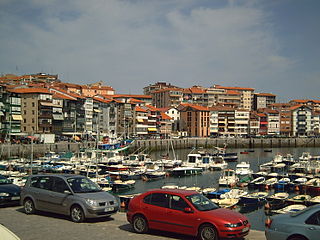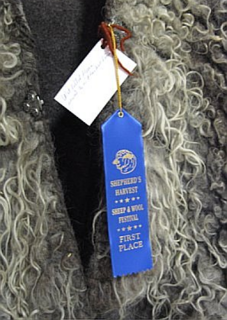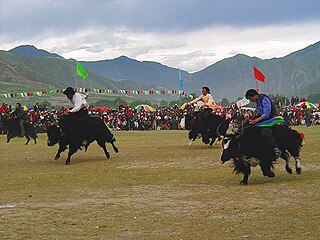 W
WBishop Mule Days is an annual festival celebrating the mule, held in Bishop, California over a six-day period leading up to Memorial Day. More than 700 mules compete in 181 events and the largest non-motorized parade in the United States. It started as a small show in 1969 with a few hundred attendees and has grown to Bishop's largest event, attracting as many as 30,000 spectators. Among mule shows, Bishop Mule Days has been described as "The Granddaddy of Them All".
 W
WBull wrestling, cow fighting or bull fighting is a non-lethal bloodsport between bulls or cows found in some parts of the world.
 W
WCock throwing, also known as cock-shying or throwing at cocks, was a blood sport widely practised in England until the late 18th century. A rooster was tied to a post, and people took turns throwing coksteles at the bird until it died. Cock throwing was traditionally associated with Shrove Tuesday; a contributor to The Gentleman's Magazine in 1737, during an anti-Gallican phase of British culture, was of the opinion that cock throwing arose from traditional enmity towards the French, for which the cock played an emblematic role.
 W
WCombat de Reines or Swiss Cow fighting;, is a traditional event held mostly in the Swiss canton of Valais, in which a cow fights another cow . Each year, the Swiss canton of Valais hosts a series of cow fights known as combats de reines, which began in the 1920s and has drawn as many as 50,000 spectators in a year. The winner is called La Reine des Reines and increases dramatically in value. At the end of the year, a grand final is held in Aproz, where the six best from seven districts do battle in six weight categories.
 W
WThe Day of the Geese, also known as Antzar Eguna, is a competition held as part of the San Antolín festival in the Basque fishing-town of Lekeitio, in which participants attempt to decapitate a goose suspended on a rope above the town harbor.
 W
WEid al-Adha is the latter of the two Islamic holidays celebrated worldwide each year, and considered the holier of the two. Also called Tabaski, it honours the willingness of Ibrahim (Abraham) to sacrifice his son Ismael as an act of obedience to God's command. Before Ibrahim could sacrifice his son, however, Allah provided a lamb to sacrifice instead. In commemoration of this intervention, an animal is sacrificed ritually. One third of its meat is consumed by the family offering the sacrifice, while the rest is distributed to the poor and needy. Sweets and gifts are given, and extended family are typically visited and welcomed.
 W
WThe Festa do Peão de Barretos is a rodeo featuring bulls and horses. In Barretos, Brazil hundreds such festivals are held throughout the year. The Festa do Peão is one of the most famous such festivals, and has become world-famous for its size. The festival is held every year in the São Paulo (state) city of Barretos, where it has traditionally been organized and promoted by the social club Os Independentes.
 W
WFrog jumping is a competitive pastime for humans in which frogs are entered into competitions to jump certain distances. Frog jumping contests are held in small communities scattered around the United States, as part of the folk culture.
 W
WGadhimai festival is a sacrificial ceremony held every five years in Nepal at the Gadhimai Temple of Bariyarpur, in Bara District, about 100 miles (160 km) south of the capital Kathmandu, and about 4.35 miles (7.00 km) east of the city of Kalaiya, near the Indo-Nepal border. It is primarily celebrated by Madhesi people. The event involves large-scale sacrificial slaughter of animals including water buffalo, pigs, goats, chickens, and pigeons, with the goal of pleasing Gadhimai, the goddess of power. People also offer coconuts, sweets, red-coloured clothes, etc. The festival has been described as the world's largest animal sacrifice event.
 W
WGai Jatra, is a festival celebrated in Nepal, mainly in Kathmandu valley by the Newar community. The festival is generally celebrated in the month of Bhadra (August–September). The date is set according to the lunar Nepa and falls on the first day of the dark four night of the month of Gunla.
 W
WGoose pulling was a blood sport practiced in parts of the Netherlands, Belgium, England, and North America from the 17th to the 19th centuries. It originated in the 12th century in Spain and was spread around Europe by the Spanish Third. The sport involved fastening a live goose with a well-greased head to a rope or pole that was stretched across a road. A man riding on horseback at a full gallop would attempt to grab the bird by the neck in order to pull the head off. Sometimes a live hare was substituted.
 W
WKapparot is a customary atonement ritual practiced by some Jews on the eve of Yom Kippur. This is a practice in which a chicken or money is waved over a person's head and the chicken is then slaughtered in accordance with halachic rules.
 W
WLife release is a traditional Buddhist practise of saving the lives of beings that were destined for slaughter. This practise is performed by all schools of Buddhism: Theravada, Mahayana and Vajrayana. It is known as "Tsethar" in Tibetan Buddhism.
 W
WThe Lychee and Dog Meat Festival is an annual festival held in Yulin, Guangxi, China, during the summer solstice in which festival goers eat dog meat and lychees. The festival began in 2009 and spans about ten days during which thousands of dogs are reportedly consumed. The festival has drawn criticism both domestically and abroad.
 W
WThe Maryland Sheep and Wool Festival is the largest and longest-running showcase of domestic sheep and wool in the United States. The 2010 festival was the 37th consecutive. It is held at the Howard County Fairgrounds in West Friendship, Maryland.
 W
WMysore Dasara is the Nadahabba of the state of Karnataka in India. It is a 10-day festival, starting with nine nights called Navaratri and the last day being Vijayadashami. The festival is observed on the tenth day in the Hindu calendar month of Ashvin, which typically falls in the Gregorian months of September and October.
 W
WNaga Panchami is a day of traditional worship of Nagas or snakes observed by Hindus throughout India, Nepal, and other countries where Hindu adherents live. The worship is offered on the fifth day of bright half of lunar month of Shravana (July/August), according to the Hindu calendar. Some Indian states, such as Rajasthan and Gujarat, celebrate Naga Panchami on the dark half of the same month. As part of the festivities, a Naga or serpent deity made of silver, stone, wood, or a painting of snakes is given a reverential bath with milk and their blessings are sought for the welfare of the family. Live snakes, especially cobras, are also worshipped on this day, especially with offerings of milk and generally with the assistance of a snake charmer.
 W
WIn ancient Roman religion, the October Horse was an animal sacrifice to Mars carried out on October 15, coinciding with the end of the agricultural and military campaigning season. The rite took place during one of three horse-racing festivals held in honor of Mars, the others being the two Equirria on February 27 and March 14.
 W
WThe Pushkar Fair, also called the Pushkar Camel Fair or locally as Kartik Mela or Pushkar ka Mela is an annual multi-day livestock fair and cultural fête held in the town of Pushkar. The fair starts with the Hindu calendar month of Kartik and ends on the Kartik Purnima, which typically overlaps with late October and early November in the Gregorian calendar. In 1998, over 1 million visitors came to Pushkar throughout the year. The Pushkar fair alone attracts over 200,000 visitors.
 W
WA running of the bulls is an event that involves running in front of a small group of cattle, typically six but sometimes ten or more, that have been let loose on a course of a sectioned-off subset of a town's streets, usually as part of a summertime festival. Particular breeds of cattle may be favored, such as the toro bravo in Spain, also often used in post-run bullfighting, and Camargue cattle in Occitan France, which are not fought. Bulls are typically used in such events.
 W
WMinnesota's Shepherd's Harvest Festival is the largest sheep and wool festival in Minnesota.
 W
WThe Surin Elephant Round-up is a cultural festival held every year in Surin Province, Isan, Thailand. Usually the event is organized during the third week of November on the weekend. The festival has its origins in the royal hunts which were conducted in Surin Province during medieval times. The indigenous residents of Surin, the Kuy, have been traditional practitioners of corralling elephants and training them as working animals. When the Ayutthaya Kingdom came into power these hunts were converted into a public extravaganza and wild elephants were replaced with tame ones. The festival, in its contemporary form, was first organized in the 1960s when civil war in Cambodia and the steady decline in economic value of elephants forced the elephant handlers (mahouts) to seek occupations in the entertainment and tourism industry.
 W
WTiruvarur Chariot festival [Tiruvarur Therottam in Tamil] is a historical event that still follows the same rituals and traditions associated with the Thyagaraja Swamy temple, Tiruvarur, in Tamil Nadu. The Lord Veethividangar (வீதிவிடங்கர்) now called as Thiyagarajaswami (Shiva) comes out of the massive ancient temple, with his consort Kondi (கொண்டி) (Parvathi) to bless the devotees who always comes to visit him in his abode, one of the world's biggest chariots. And this chariot was constructed by Kothanars and it is Asia's biggest chariot.
 W
WA toro embolado, bou embolat, roughly meaning 'bull with balls', is a festive activity, typical of many towns in Spain, in which a bull that has balls of flammable material attached to its horns, which are set on fire, is set free in the streets at night, and participants dodge the bull when it comes close. It can be considered a variant of an encierro. This activity is held in a number of Spanish towns during their local festivals. In recent years, animal welfare activists have attempted to stop this practice due to the cruelty to the animal.
 W
WWorld Animal Day is an international day of action for animal rights and welfare celebrated annually on October 4, the feast day of Francis of Assisi, the patron saint of animals.
 W
WYak racing is a spectator sport held at many traditional festivals of Tibet, Kazakhstan, Kyrgyzstan, Gilgit-Baltistan, and Mongolia, in gatherings which integrate popular dances and songs with traditional physical games. For Tibetans in particular it is very special festive occasion.